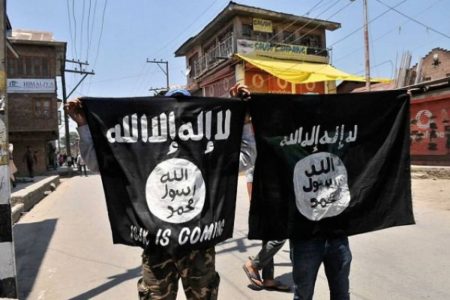
CIA Report: The Islamic State remains intact despite killing of leader al-Baghdadi
ISIS has maintained its organisational structure and leadership, with thousands of fighters posing a threat in Iraq and Syria, despite the killing of Abu Bakr al-Baghdadi last October, according to a CIA report.
The US spooks claim the assassination of the Isis leader in Syria has failed to weaken the jihadist group, despite rumours of deepening ideological divisions.
Mr Baghdadi was replaced by Abu Ibrahim al-Hashimi al-Qurashi, who has struggled to lead the group, with “systematic” splits reported in the organisation.
According to the CIA report, Isis has continued low-level attacks in a number of countries via “mobile groups” based in Iraq and Syria.
The jihadists maintain a network of 14,000 fighters, according to US counterterrorism officials, down from 30,000 in late 2018.
Earlier this month it was reported that Isis had taken control of the Syrian town of Al-Sukhna in the northern countryside of Homs.
The CIA report comes as US forces have been asked to leave Iraq, where is has some 5,000 soldiers stationed at a number of military bases.
Washington remains reluctant to leave the country as it would mean losing regional influence and deny it strategic positioning as it ratchets up pressure on neighbouring Iran, where it seeks regime change and control of its vast oilfields.
The US has faced persistent allegations of support for Isis, including the transfer of jihadist militia to Iraq from its al-Tanf military base in Syria.
Badr Organisation leader Qusai al-Anbari made the claim in January and was supported by Iraqi security commentator Karim al-Khikani, who said Isis fighters had been relocated to the region.
CIA covert operations are known to have armed a myriad of Islamist groups associated with the flow of weapons and other military equipment into Syria, described as an “industrial revolution of terrorism.”
The covert Timber Sycamore programme, which cost more than $1 billion (£803 million), was started by the Obama administration and lasted four years until current US President Donald Trump cancelled it in 2017.
While the funding has been officially withdrawn, US weapons and military hardware continue to litter the battlefields of Syria and have often fallen into the hands of jihadist groups. Syrian government forces consistently report finding US-supplied weapons during clear-up operations of former jihadist bases across the country.
The US Department of Defence admitted in early April that it had “lost” $4.1m (£3.2m) of military hardware, which it blamed on a “lack of internet connectivity.”
In February 2018, Washington was unable to account for $715m in weapons and equipment in northern Syria.
Source: Morning Star Online





